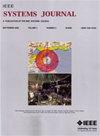Robust Interval Type-2 Fuzzy Predictive Automatic Generation Control of Multiarea Interconnected Power Systems
IF 4.4
3区 计算机科学
Q1 COMPUTER SCIENCE, INFORMATION SYSTEMS
引用次数: 0
Abstract
This research investigates a supervisory interval type-2 fuzzy predictive control (SIT2FPC) technique to propose a novel control method for the automatic generation control (AGC) problem in interconnected power systems. The proposed control method comprises two main components: the interval type-2 fuzzy control (IT2FC) technique, employing a proportional integral derivative approach, and a supervisory predictive controller. IT2FC sets are considered for a multiarea interconnected power network, followed by the implementation of a supervisory predictive control method for the entire system. It is demonstrated that the SIT2FPC method effectively addresses the challenges within the overall system. By incorporating a predictive controller as a robust supervisory control technique, the proposed method can effectively handle unexpected problems that may arise within the IT2FC units. In order to evaluate the efficiency and validity of the proposed robust SIT2FPC technique, it is applied to address the AGC problem in a four-area interconnected power grid. Also, the IEEE 39-bus power system is considered as a case study to validate the proposed AGC method. The outcomes of six different simulation scenarios clearly illustrate the effectiveness of the proposed robust control method.多区域互联电力系统鲁棒区间2型模糊预测自动发电控制
本文研究了一种监督区间2型模糊预测控制(SIT2FPC)技术,为解决互联电力系统中的自动发电控制(AGC)问题提供了一种新的控制方法。所提出的控制方法包括两个主要部分:采用比例积分导数方法的区间2型模糊控制(IT2FC)技术和监督预测控制器。考虑了多区域互联电网的IT2FC机组,然后对整个系统实施监督预测控制方法。结果表明,SIT2FPC方法有效地解决了整个系统中的挑战。通过将预测控制器作为鲁棒监督控制技术,所提出的方法可以有效地处理IT2FC单元中可能出现的意外问题。为了评估所提出的鲁棒SIT2FPC技术的效率和有效性,将其应用于解决四区互联电网的AGC问题。最后,以IEEE 39总线电力系统为例,验证了所提出的AGC方法。六个不同仿真场景的结果清楚地说明了所提出的鲁棒控制方法的有效性。
本文章由计算机程序翻译,如有差异,请以英文原文为准。
求助全文
约1分钟内获得全文
求助全文
来源期刊

IEEE Systems Journal
工程技术-电信学
CiteScore
9.80
自引率
6.80%
发文量
572
审稿时长
4.9 months
期刊介绍:
This publication provides a systems-level, focused forum for application-oriented manuscripts that address complex systems and system-of-systems of national and global significance. It intends to encourage and facilitate cooperation and interaction among IEEE Societies with systems-level and systems engineering interest, and to attract non-IEEE contributors and readers from around the globe. Our IEEE Systems Council job is to address issues in new ways that are not solvable in the domains of the existing IEEE or other societies or global organizations. These problems do not fit within traditional hierarchical boundaries. For example, disaster response such as that triggered by Hurricane Katrina, tsunamis, or current volcanic eruptions is not solvable by pure engineering solutions. We need to think about changing and enlarging the paradigm to include systems issues.
 求助内容:
求助内容: 应助结果提醒方式:
应助结果提醒方式:


